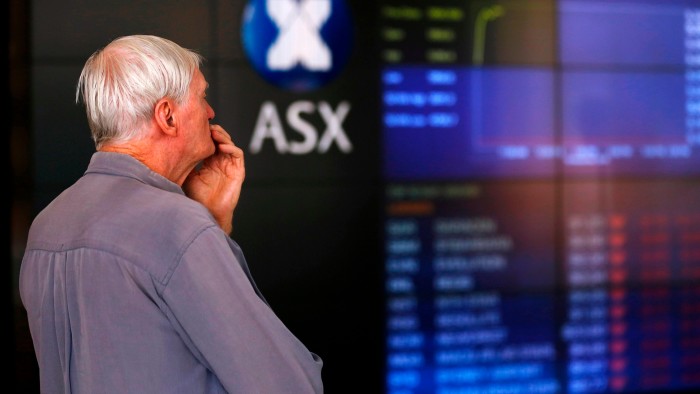Australia’s ASX to wind down mFund platform amid ETF boom

Simply sign up to the Exchange traded funds myFT Digest -- delivered directly to your inbox.
Latest news on ETFs
Visit our ETF Hub to find out more and to explore our in-depth data and comparison tools
The Australian Securities Exchange has announced that it is set to wind down its managed fund settlement service, or mFund, by the end of May 2026 saying it was not likely to be a “material offering” in the local funds market.
This is due to a “notable shift in investor interest regarding unlisted managed funds, which has coincided with a growing demand for exchange-traded funds”, according to the ASX.
ASX launched mFund in 2014 to provide investors with a “new way to access unlisted managed funds”.
The service allows investors to “buy, hold and sell units in unlisted managed funds through a process similar to buying and selling shares”, according to its website.
However, since the service’s inception, the market environment and investor preferences for unlisted managed funds have shifted in favour of ETFs. The ASX reportedly began considering closing the service in June.

This article was previously published by Ignites Asia, a title owned by the FT Group.
In July, the stock exchange operator released a consultation paper to gather feedback from product issuers and industry associations about the proposed move.
Some of the feedback garnered from the consultation include the fact that self-directed and advised investors were “unlikely to adopt mFund at scale” to the same extent that they adopt exchange traded products, according to the ASX’s response paper.
There were 222 managed fund products with a market capitalisation of A$1.34bn (US$887mn) as of October, according to the latest investment products report from the ASX. In comparison, the 308 locally listed ETPs have a market capitalisation of A$145.83bn as of the same period.
The growth of active ETPs and the dual access ETP structure have also increased the number of strategies available to investors, thereby decreasing the competitive advantage of mFund over the ETP structure, according to stakeholder responses.
The new design and distribution obligations have also “impacted the willingness of issuers and brokers to offer a broad range of alternative investment strategies and asset classes to investors through mFund”.
“It remains unclear to ASX to what extent, if any, addressing existing mFund operational and connectivity issues would increase the long term attractiveness of a settlement service for unlisted managed funds,” according to the response paper.
At present, mFund is available for applications and redemptions via brokers until further notice. Investors will then have their mFund holdings converted from being broker-sponsored to being held directly with the fund manager after funds are withdrawn from the service.
Further plans for the winding down of this service will be shared before closure, the ASX said in its announcement.
“The market for ETFs has been, and continues to be, strong and the evolution of active ETFs in recent years has provided a new opportunity for fund managers to bring their open-ended active products to ASX,” it added.
Australia’s ETF industry enjoyed “robust inflows” of A$1.8bn last month, but these net sales “were not enough to combat a decline in asset values” amid weakening global stock markets, according to Betashares.
Assets under management in Australia’s ETF industry totalled A$150.1bn at the end of last month, down from A$152.9bn at the end of September and a record A$156.1bn at the end of August.
Chris Brycki, founder and chief executive of Australian robo-advisory firm Stockspot, said earlier this month that the country’s ETF industry had expanded rapidly in the past few years, but that Australia was “still a long way behind other ETF markets around the world”.
*Ignites Asia is a news service published by FT Specialist for professionals working in the asset management industry. Trials and subscriptions are available at ignitesasia.com.
Comments